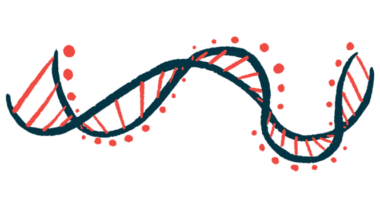Altered activity of ancient viral DNA in human genome tied to ALS
Study among first to ID connections to neurodegenerative disease risk

Alterations in the activity of ancient viral DNA that have been incorporated into the human genome may contribute to the development of amyotrophic lateral sclerosis (ALS), according to a study led by researchers at King’s College London.
While earlier studies had started to identify connections between these ancient viruses and human illnesses, the researchers indicate that this new work is among the first to find specific ones that may contribute to neurodegenerative disease risk.
“Our findings offer robust evidence that specific viral sequences within our genome contribute to the risk of neurodegenerative diseases,” Rodrigo Duarte, PhD, co-lead author of the study and a research fellow at King’s College, said in a university news story.
Duarte and his colleagues, including a researcher from Northwell Health in the U.S., used data from hundreds of brain samples to analyze the connections between gene expression, or activity, and genetic risk factors for neurodegenerative diseases — such as ALS. The team’s focus became several specific viral sequences.
“These sequences are not just static fossils derived from ancient viral infections — they must be actively influencing brain function in ways we are only beginning to understand,” Duarte said.
The study, “Ancient viral DNA in the human genome linked to neurodegenerative diseases,” was published in the journal Brain, Behavior, and Immunity.
Investigating ancient DNA
Human endogenous retroviruses, or HERVs, are viruses that became incorporated into human DNA thousands of years ago when ancestors of today’s people were infected with them. While these viral DNA make up considerable stretches of the modern human genetic code — about 8% of it — they don’t have the tools they need to replicate and cause any active infection.
Indeed, HERVs are often considered remnant genetic material without any specific function. However, accumulating research is linking some of them to current human diseases, including ALS.
In the new study, the trio of scientists used a technique called a retrotranscriptome-wide association analysis to identify possible relationships between HERVs and neurological conditions. These conditions included ALS and multiple sclerosis (MS), as well as Alzheimer’s disease and Parkinson’s disease.
The team’s approach cross-referenced information from two types of databases: ones containing information about genetic variants associated with disease, and others with data on HERV activity. Essentially, the scientists were looking for HERV activity changes in the presence of disease-associated genetic variants. These could indicate that such changes in HERV activity are involved in the disease.
“Using large genetic datasets and a new analysis pipeline, this study is well equipped at pinpointing which specific HERVs are important in increasing susceptibility for neurodegenerative diseases,” said Timothy Powell, PhD, co-lead author and a senior lecturer at King’s College.
Through a series of analyses, the scientists identified a statistically significant association between one HERV signature — called MER61_12q14.2 and found on chromosome 12 — and ALS. Another on chromosome 1, called ERVLE_1p36.32a, was associated with MS. No HERV signatures were found to be strongly associated with Parkinson’s or Alzheimer’s diseases.
Further study needed into more diverse population
Additional experiments indicated that the identified viral sequences appeared to be involved in homophilic cell adhesion, a process in which cells in the brain adhere to each in order to communicate.
Disruptions in homophilic cell adhesion have been previously associated with neurodegeneration, according to the researchers, who noted that such disturbances may impair the health of neural networks and eventually drive cell death.
Overall, according to the team, “our study provides an important step forward in our understanding of how ancient viral DNA in the human genome contributes to neurodegenerative disease.”
“But some limitations should be acknowledged,” the team added.
Our study provides an important step forward in our understanding of how ancient viral DNA in the human genome contributes to neurodegenerative disease. … Future studies investigating genetic and expression differences in more diverse cohorts are likely to highlight shared and ancestry-specific mechanisms.
One notable limitation of the study, per the scientists, was that it largely involved data from people of European ancestry. Thus, it isn’t yet clear if the findings would be generalizable to a more diverse population.
“Future studies investigating genetic and expression differences in more diverse cohorts are likely to highlight shared and ancestry-specific mechanisms,” the team wrote.
Eventually, these discoveries could open the door for the development of new therapeutic approaches for ALS, though more research is still needed to better understand exactly by which mechanisms this ancient viral DNA might lead to neurological disease.
“We now need to better understand how these HERVS impact on brain function, and whether or not targeting HERVs could offer new therapeutic opportunities,” Powell said.








